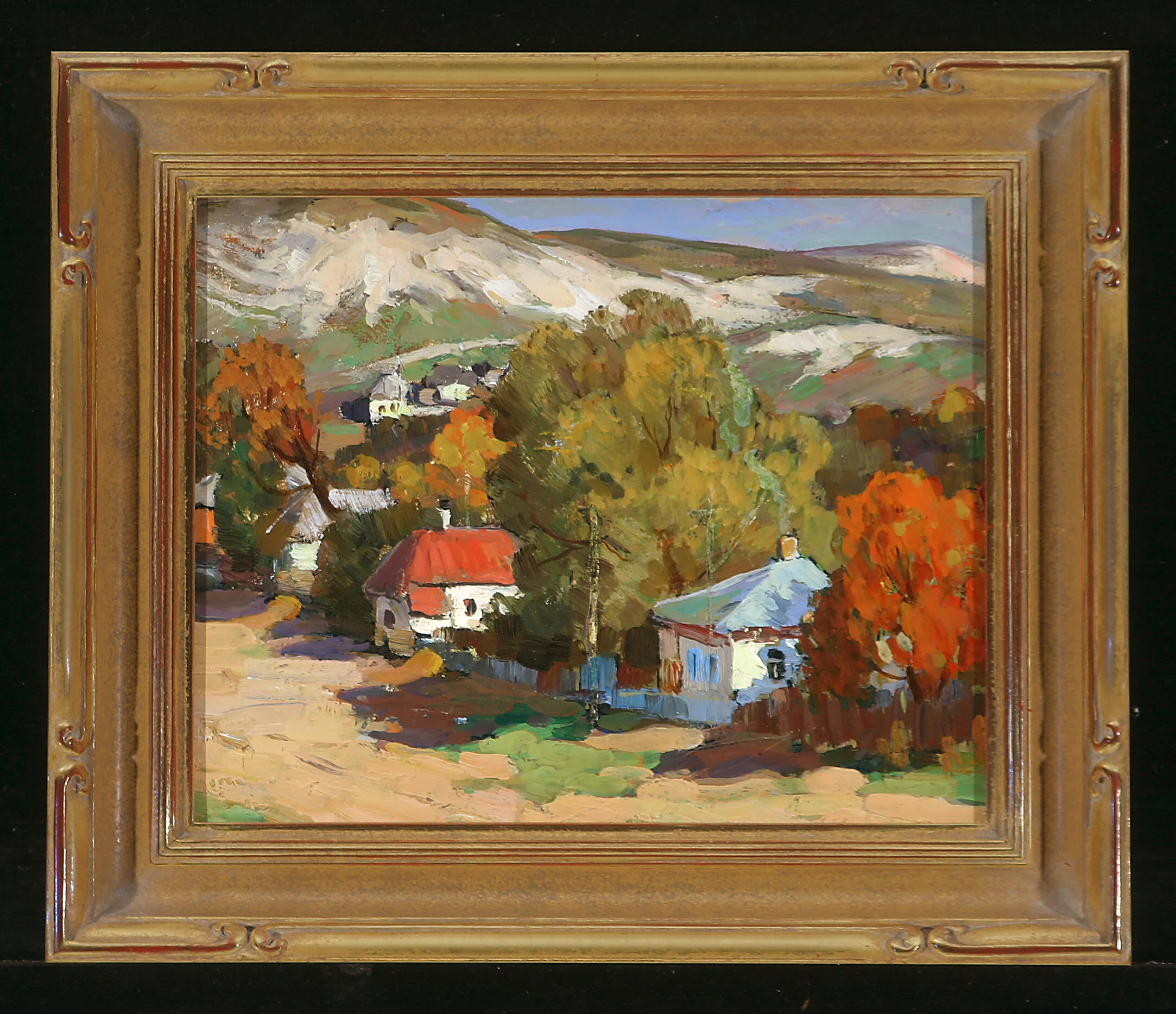Yuri Fedorovich Vnodchenko was born on October 8, 1927, in the town of Kasharka in the Odessa region of the Ukraine. He was orphaned at the age of six, when his father died. He went to a home in a peasant village, and in his artwork Vnodchenko honors the commoners who raised him. Although Odessa was a poor region, Yuri and the other children of the region were given art and music lessons. When Germany invaded the Ukraine during World War II, the children at the home were moved to Teraspol in Moldova. As in the rest of the Soviet Union, the German invasion was extremely hard on the people, and the children were forced to forage through bombed-out buildings in the city to survive. On one foraging expedition, Yuri found a set of oil paints. He began copying paintings he saw in books and museums and was able to sell some of these, providing a small income for himself. At the same time, and older artist who lived in the area allowed the boys to come to his home for instruction in art. Equally helpful was a Romanian officer stationed in Teraspol and involved in cultural affairs. He was able to take the boys’ works to sell, bringing them art supplies in return.
When the war ended, Vnodchenko’s formal art studies began at the newly opened art college in Kishinev, the capital of Moldova. He studied there from 1944 to 1950. From there he went to study at the Kiev Art Institute, studying under the famous artist and academician Tatyana Yablonskaya. Vnodchenko sites Yablonskaya as the greatest influence on his development as an artist. Yuri graduated from the Kiev Art Institute in 1956 and moved to Voronezh to live and work. He has participated in all Voronezh regional art exhibitions since then. He was encouraged to travel and work at the academic dachas, or country houses where talented artists were invited to live and concentrate on their work. (Only the more promising and proven artists were granted academic dachas.)
Vnodchenko has been a member of the Artists’ Union of the USSR since 1961 and participates in regional, zonal, republican and All-Union exhibitions. In 1976 he was awarded the extremely prestigious title of “Honored Artist of Russia”. He taught for many years at the Voronezh Art College.
His early works consisted of mainly figurative paintings, but he is now also well known for his landscapes, historical works, and paintings depicting the hard-working people of his homeland.






































